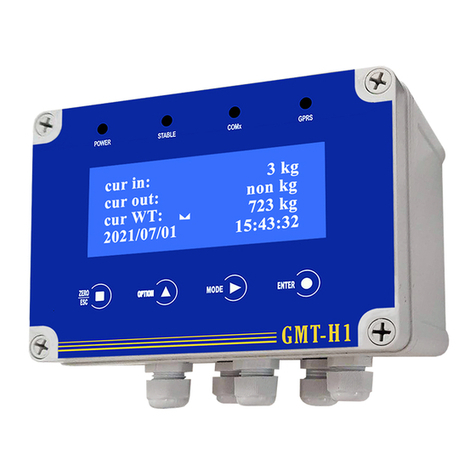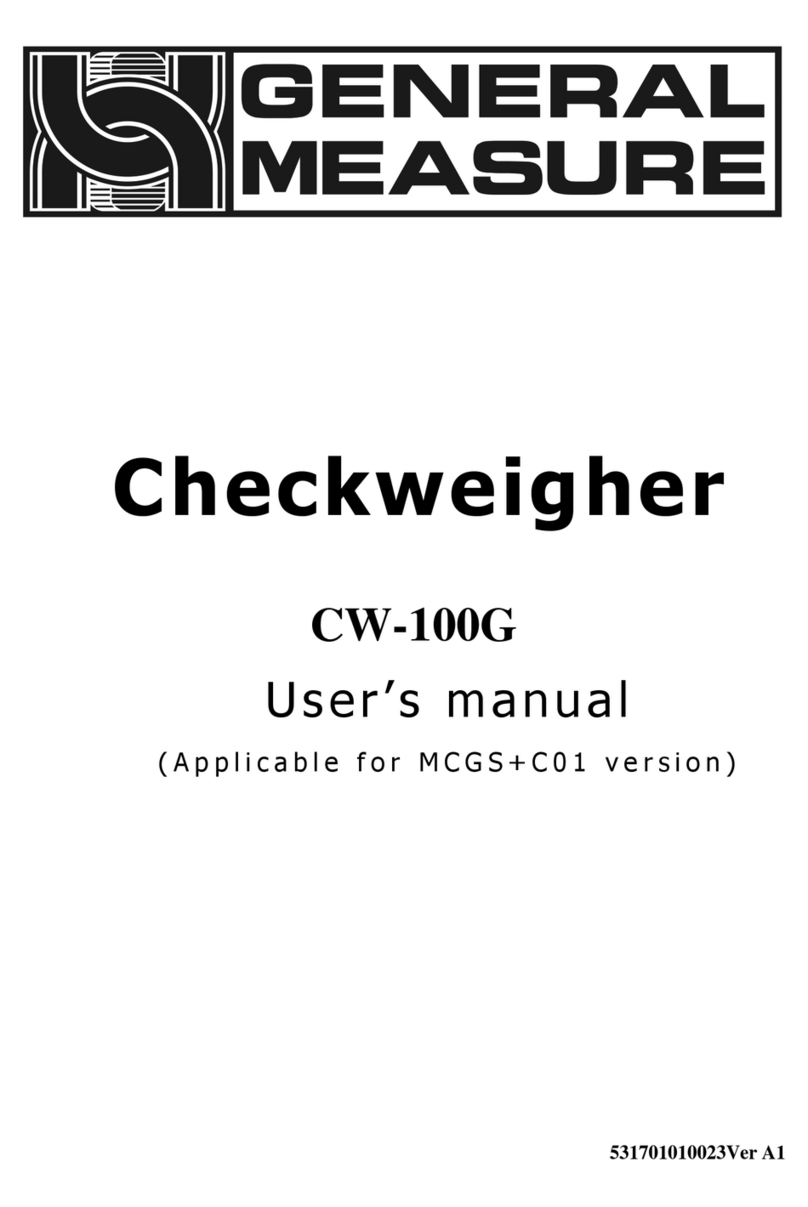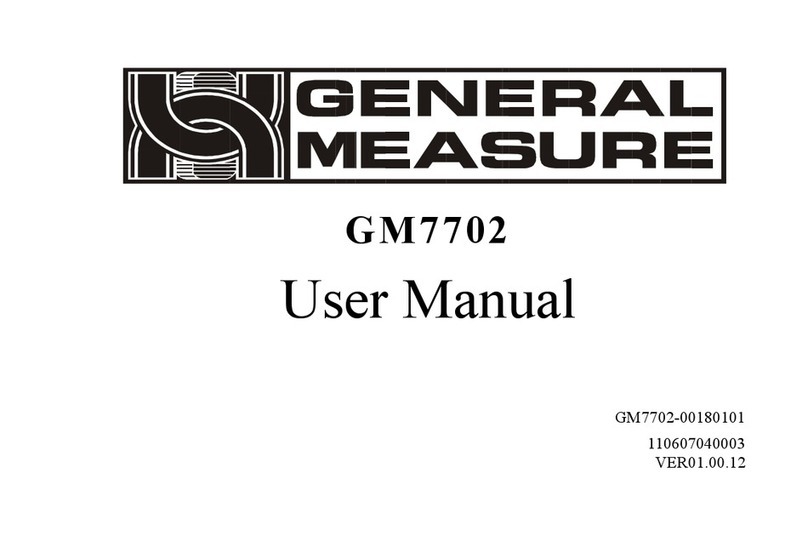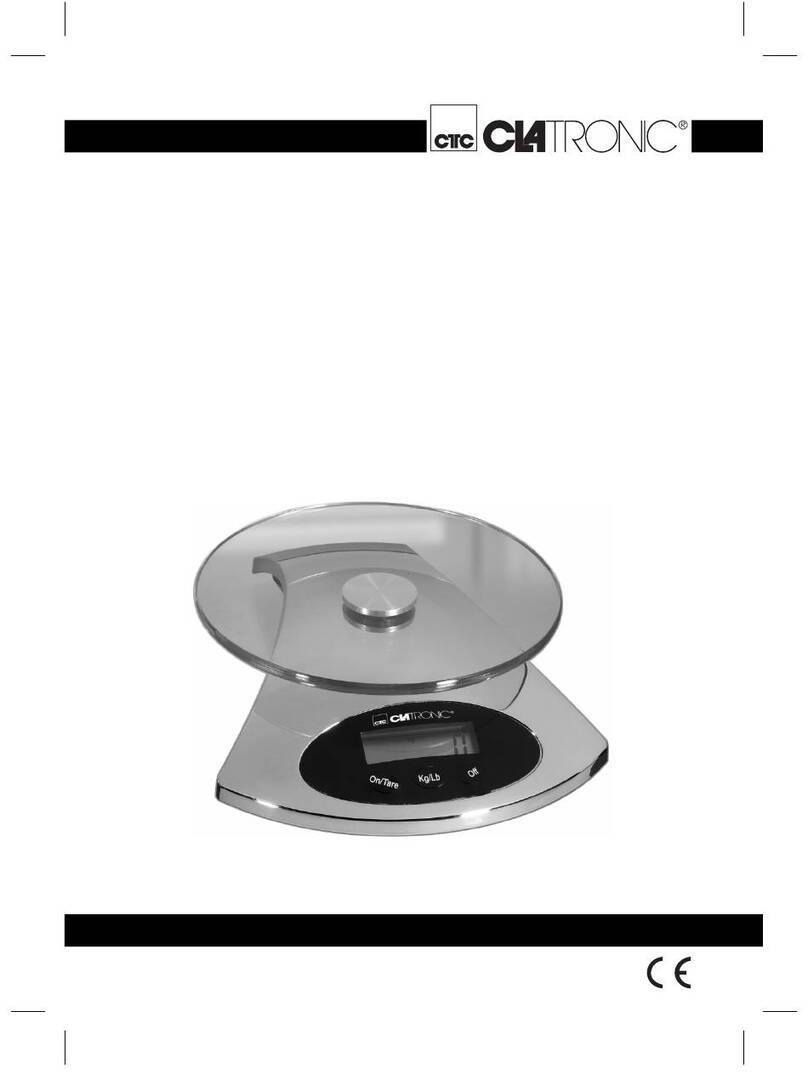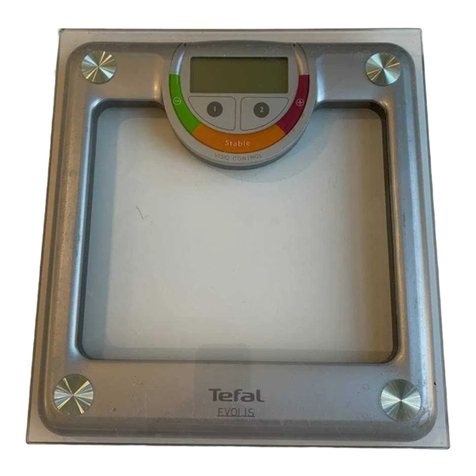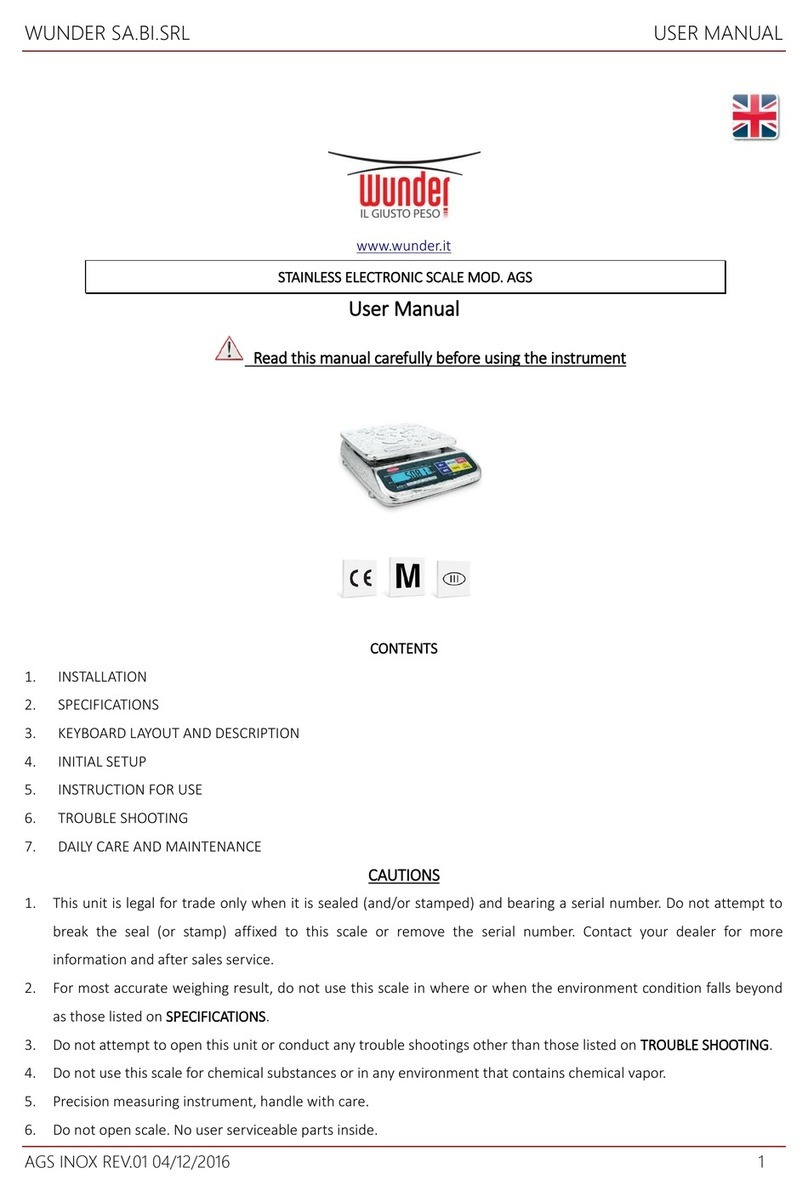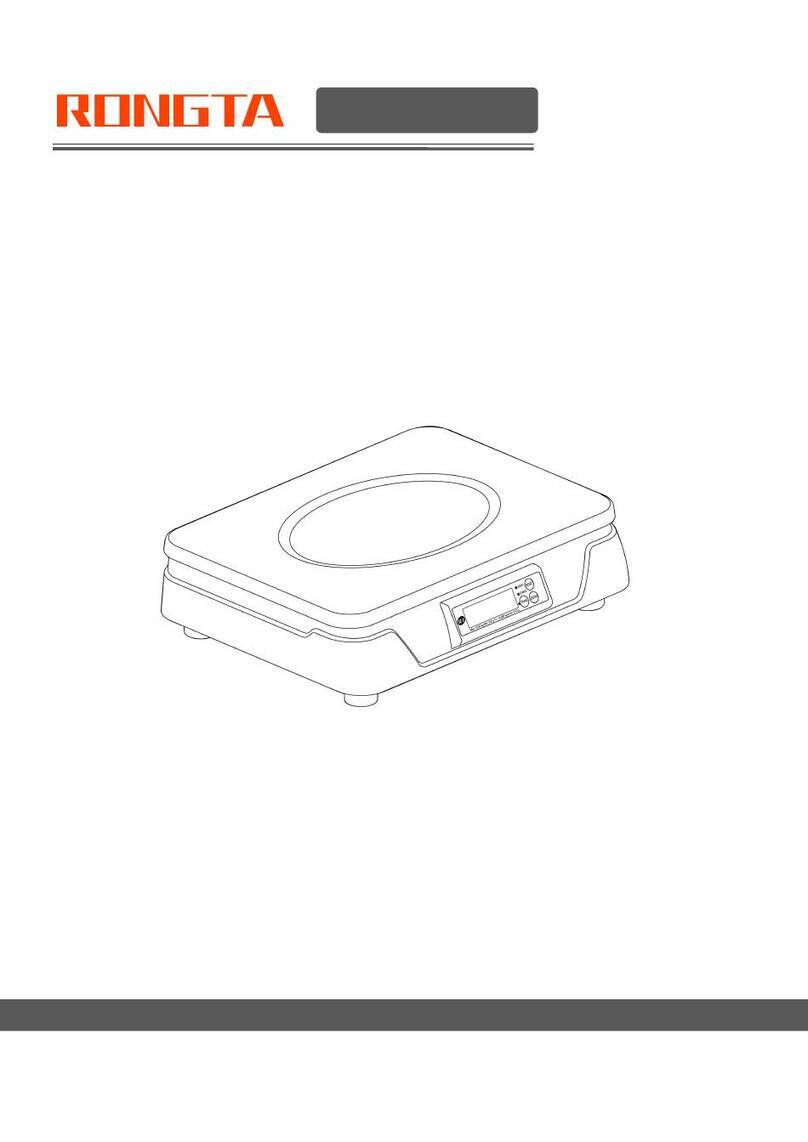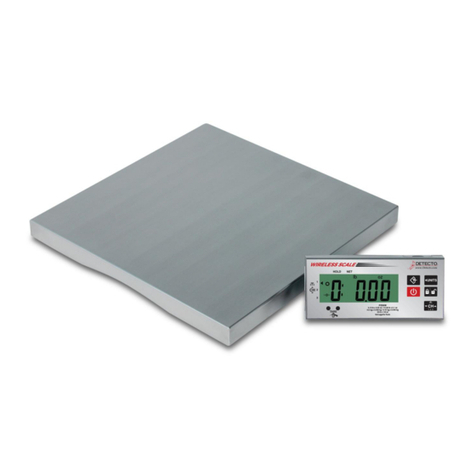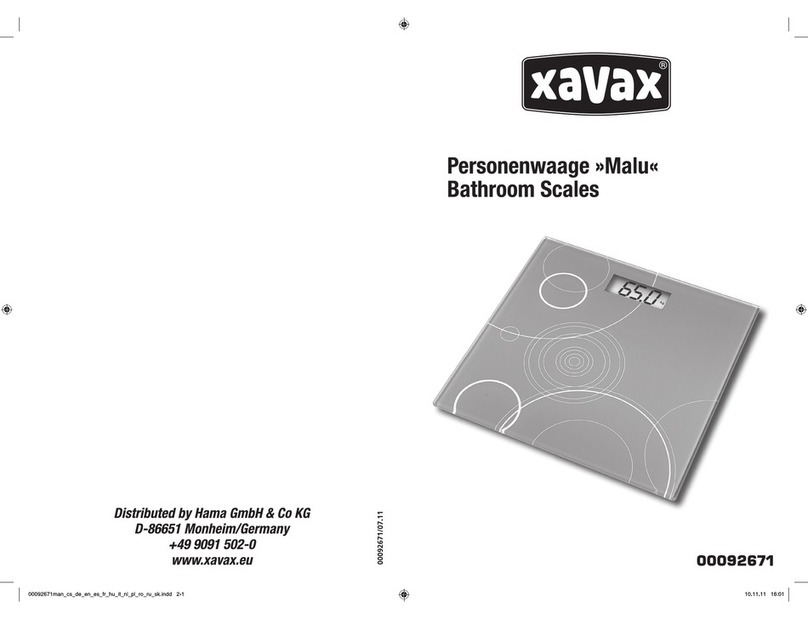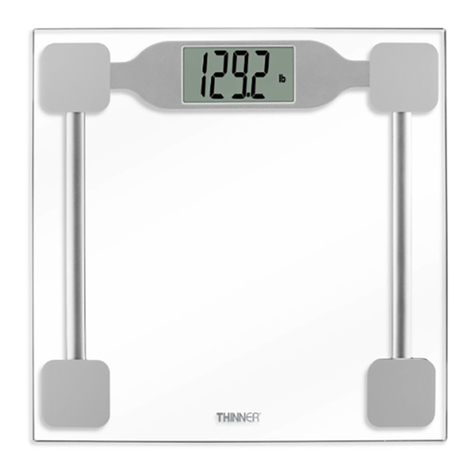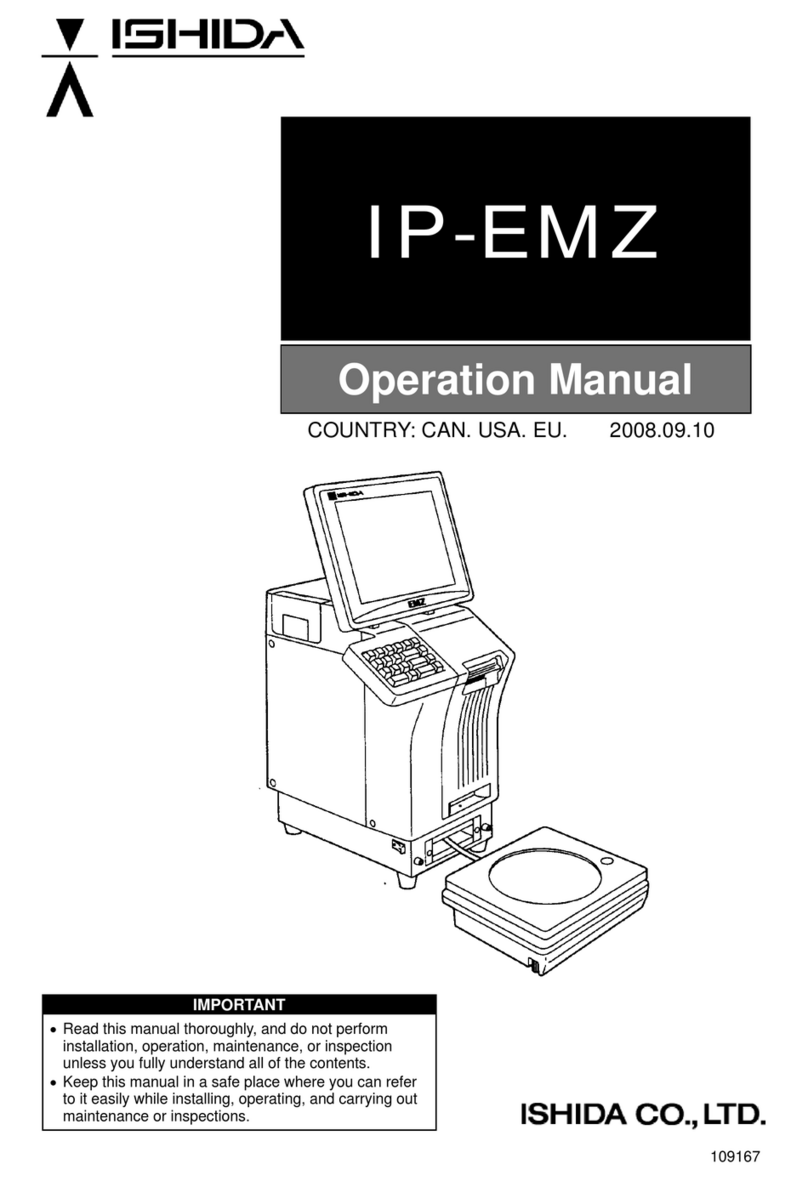General Measure Tuxon-A User manual

Tuxon-A
User’s Manual
Ver. 1 / 2012 / 10

SAFETY PRECAUTION
WARNING
1. Use a lightning surge protector to avoid the risk or injury to operators and
damage to instruments when lightning surge occurs frequently in the working
environment.
2. Make sure the voltage of power supply is proper.
3. Ground the grounding terminal.
4. Carefully check all the wiring before the indicator is powered on.
5. In the case of smoke, abnormal smell or strange sound, immediately cut off
the power.
CAUTION
1. Please do not install the indicator directly in the following environments:
1) Where the temperature or humidity exceeds allowed range.
2) Where the indicator’s main body is easily affected by vibrations.
3) Where exist a mass of dust and powder, such as salt and iron power.
4) Places containing caustic, flammable and explosive das.
5) Where easily to be splashed by water, oil or chemicals.
2. Please take adequate shielding measures when the indicator is used at
following locations:
1) Near power lines
2) Containing strong electrical field and magnetic field
3) Where static or relay noise is generated.
3. Please cut off the power of Indicator before doing the following operations:
1) Installation
2) Wiring
3) Dismounting

CONTENTS
CONTENTS...................................................................................................................4
1 General Description......................................................................................................1
1.1 General Description............................................................................................1
1.2Functions and Characteristics...............................................................................1
1.3 Front Panel ........................................................................................................1
1.4 Rear Panel .........................................................................................................2
1.5 Technical Specifications .....................................................................................3
1.6 Dimensions of Indicator......................................................................................4
2 Installation and Wiring..................................................................................................5
2.1 How to Install Indicator ......................................................................................5
2.2 Connection of Power Supply...............................................................................6
2.3 Connection of Load Cell.....................................................................................6
2.3.1 6-wired Connection..................................................................................6
2.3.2 4-wired Connection..................................................................................7
2.4 Connection of Communication Interface..............................................................8
2.4.1 D/AOutput Interface (Only for Tuxon-A)..................................................8
3Calibration....................................................................................................................8
3.1 Instruction..........................................................................................................8
3.2 Flow Chart of Calibration ...................................................................................9
3.2.1 Flow Chart of Calibration for Tuxon-A......................................................9
3.3Millivolt Value Display......................................................................................11
3.4 Calibration with Weights...................................................................................12
3.5 Calibration without Weights..............................................................................12
3.5.1 Calibration without Weights for Tuxon-A................................................13
3.6 Explanation for Calibration Parameters..............................................................14
3.7 Log Table for Calibration Parameters ................................................................14
4 Working Parameters Setting........................................................................................15
4.1 Flow Chart of Working Parameters Setting ........................................................15
4.1.1 Setting Flow Chart for Tuxon-A..............................................................15
4.2 Parameter Setting Method.................................................................................16
4.2.1 Data Input Method.................................................................................16
4.2.2 Option Selecting Method........................................................................16
5 Operation...................................................................................................................18
5.1 Manual Zeroing................................................................................................18
5.2 Display D/AOutput Value (Only for Tuxon-A)..................................................18
5.3 Password Input.................................................................................................19
5.4 Password Setting..............................................................................................20
6 Display Test ...............................................................................................................21
7 Error and Alarm Messages ..........................................................................................22


1
1 General Description
1.1 General Description
Tuxon-A weighing transmitter is applied to transmit weight in industrial fields, which
special features are small volume, plenty communicating commands, stable performance,
easy operation and practicability, so it is widely used in concrete and bitumen mixing
equipment, metallurgy furnace and converter, chemical industry and feed, etc. .
1.2 Functions and Characteristics
Applicable to all kinds of resistance strain gauge bridge load cell.
Front panel numerical calibration
Multilevel of digital filter
Automatic zero -tracking
Automatically zero when powered on
16 Bits D/Aoutput: 4-20mA, 0-20mA, 0-24mA, 0-5V, 0-10V, -5-5V or -10-10V
Selectable (for sub-model Tuxon A)
1.3 Front Panel
Keypad:
:Zero/Esc.
Zero Key: Used to clear display data.
Esc Key: Used to exit from current operation or go previous.
:Option Key. Used to scroll optional values of parameter.
And to make flashing digit increase 1 while data inputting.
:Function Selecting Key.
To make flashing position move to the right digit when data inputting.
:Confirming Key. Used to confirm present operation.
Status IndicatorLamp:

2
○ZERO: Light on when present weight is within 0±1/4d.
○STAB: Light on when changes of weight values are within the range of motion detecting
during motion detecting time.
○DATA: Light on when indicator displays the value of D/Aoutput.
Main Display: 6 digits, for displaying weight, value of D/A output, and the information of
parameters.
1.4 Rear Panel
1. Serial Communication Connector/D/AOutput Connector
2. Load Cell Connector
3. Power Supply Connector
4. Grounding Terminal

3
1.5 Technical Specifications

4
1.6 Dimensions of Indicator

5
2 Installation and Wiring
2.1 How to Install Indicator

6
2.2 Connection of Power Supply
1.AC power must have the grounding protection.
2.Do not connect the ground wire of indicator directly to
the GND of other equipments.
2.3 Connection of Load Cell
Please refer to the picture below to connect load cells to Tuxon-A. When you use 4-
wired load cells, you must bridge the SN+ with EX+ and bridge the SN- with EX-.
The signal definition of each port of the load cell connector is as follows:
Port
EX+
SN+
EX-
SN-
SIG+
SIG-
SHLD
Definition
Excitation+
Sense+
Excitation-
Sense-
Signal+
Signal-
Shield
2.3.1 6-wired Connection

7
2.3.2 4-wired Connection
1. The signals from the load cells are low voltage analog signals, which are
easily affected by electro-noise, so the cables connecting load cells to
indicator should use shielded cables, and not bind with other cables,
especially power supply cables.
2. For the application of short-transporting-distance and lower precision, 4-wired
connection can be used; otherwise, 6-wired should be used.
3. Make sure EX+ bridges with SN+ and EX- bridges with SN- when 4-wire
connection is used.
4. For the application of multi-load cell in parallel connection, the sensitivity of each
load cell (mV/V) must be same.

8
2.4 Connection of Communication Interface
2.4.1 D/AOutput Interface (Only for Tuxon-A)
D/A output contains 2 types, voltage-output type (0-5V, 0-10V, -5-5V, or -10-10V
selectable) and current-output type (4-20mA, 0-20mA, or 0-24mAselectable).
The form of D/Aoutput is decided by work parameter F1.1.
The signal definition of each port of D/Aconnector is as follows:
NC: Null; IO+: current-output +; IO-: current-output -;
VO+: voltage-output+; VO-: voltage-output-
3Calibration
3.1 Instruction
(1) Calibration procedure must be executed when a Tuxon-A indicator is put in use at
the first time, the preset parameters may no longer meet the user’s needs, and any part of the
weighing system was changed. Position of decimal point, minimum division, maximum
capacity, zero, and gain can be set and confirmed through calibration.
(2)During calibration, if you want to skip one parameter to next one, press
directly. If you want to set only one parameter, please press to save
parameter’s value and then press to exit.
(3)Please see section 3.6 for parameters’ instruction.
(4)Please record each value in the blank table in section 3.7 during calibration for the
emergency use in future.
(5) See chapter 8 for error alarm message that may be displayed during calibration.

9
3.2 Flow Chart of Calibration
3.2.1 Flow Chart of Calibration for Tuxon-A

10

11
3.3 Millivolt Value Display
This function is mainly used for system test, position-error test for weighing
mechanism and linearity test for load cell.
1. System Test
(1) If display data changes with loaded weight changes, it shows that connection of
load cell is correct and weighing mechanism works well.
(2)If display value is OFL (or –OFL), it means that loaded weight on load cells is too
large (or too small). Please unload the weight (or load more), if display value is still OFL
(or –OFL), the possible reasons are as follows:
a. There is something wrong with weighing mechanism, please check and clear.
b. The connection of load cell is incorrect, please check and clear.
c. Load cells may be damaged, please replace.
2. Position-errorTest forWeighing Mechanism
Load a same weight on each corner of weighing mechanism and record displayed

12
millivolt value respectively. If differences among these values are obvious, please adjust
weighing mechanism.
3. Linearity Test for Load Cell
Load same weight for several times, and record displayed value every time. If one or
two values are obviously much larger or smaller than any others, it means that the linearity
of load cell is bad.
*NOTE: You must use to zero display data before weight is loaded
foreach time.
3.4 Calibration with Weights
During calibration with weight,please record the zero millivolt value, gain millivolt
value and the loaded weight value in the blank table below. If it is not convenient to load a
weight to calibrate, these values can be used for calibration without weights.
Zero millivolt
value(mV)
Gain millivolt
value(mV)
Loaded Weight
Date
Remarks
1
2
3
4
5
3.5 Calibration without Weights
When it is not convenient to load a weight to calibrate, calibration can be done without
weights using recorded data in the table in section 3.4. However, this method is just used for
some emergencies, it will make calibration result incorrect if load cells, or indicator has
been replaced.
3.5.1 Calibration without Weights for Tuxon-A

13
3.6 Explanation for Calibration Parameters
Symbol
Parameter
Value of parameter
Default
Pt
Decimal Point
0/ 0.0/ 0.00/ 0.000 /0.0000
0
1d=
Min. Division
1/ 2/ 5 /10 /20 /50
1

14
CP
Max. Capacity
≤Min. Division×30000
10000
t
Millivolt Value
o
Zero
c
Gain
Switch for Calibration
Via Serial Interface
(only for Tuxon-S)
Password Setting
3.7 Log Table for Calibration Parameters
Parameter
Calibrated Value
Date
Remarks
Decimal Point
Min. Division
Max. Capacity
Password

15
4 Working Parameters Setting
4.1 Flow Chart of Working Parameters Setting
4.1.1 Setting Flow Chart for Tuxon-A

16
4.2 Parameter Setting Method
4.2.1 Data Input Method
4.2.2 Option Selecting Method
Table of contents
Other General Measure Scale manuals
